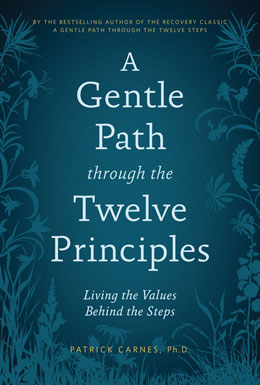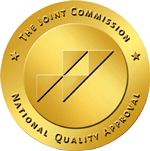
"What the founders of AA discovered through trial, error, luck, and grace has now been validated by science."

Other titles you may like.

A Skeptic's Guide to the 12 Steps
Visit Recovery Road to view and listen to all the episodes.
Episode 47 -- August 15, 2020
Hijacking and Healing: The Brain Science of Addiction and Recovery
It's easy to get discouraged by the slow progress and uncomfortable tradeoffs of recovery. Life, in these unpredictable times, can seem like a long and hard road. Take heart in the fact that the commitments and practices of your recovery journey are literally rebuilding the way your brain works. It's National Recovery Month--take a moment to acknowledge your progress. In this excerpt from his book, A Gentle Path Through the Twelve Principles: Living the Values Behind the Steps, Dr. Patrick Carnes outlines current brain science behind addiction and healing and invites us to embrace recovery as a lifelong creative emotional, physical, and spiritual process of healing and growth.
It has been edited for brevity.
In the twenty-first century, we know something that Bill W., Dr. Bob, and the other founders of AA intuited but couldn't prove scientifically. We know how and why recovery works.
What the founders of AA discovered through trial, error, luck, and grace has now been validated by science. Recent developments in neuroscience, radiology, genetics, and psychobiology give us a clear picture of how addiction hijacks the human brain. They also give us equally clear evidence that working a Twelve Step program literally rewires our brains for recovery. Through CT scans, MRIs, and other high-tech tools, we now know some things:
- Addiction changes the brain, deadening certain cognitive areas and laying down neural networks that chemically encourage us to compulsively repeat harmful behaviors.
- All addictions, including those that do not involve alcohol or other drugs, create similar wounds in the same centers of the brain.
- Addictions interact in the brain in several different ways. One addiction can trigger, replace, or heighten another through a measurable biochemical process.
- Trauma--whether physical, sexual, or emotional--changes the brain's chemistry, predisposing it to addictions and compulsions.
- The new thoughts and behaviors produced by working the Twelve Steps appear to heal the brain in observable, predictable ways, building and deepening new neural pathways.
- As these neural pathways deepen, we create new, healthy patterns of thinking and acting.
- No matter how addicted we are or how unmanageable our life has become, our brains retain the potential for healing and recovery in their very cells.
- Safety is a prerequisite for healing the brain. Only when the brain "feels" safe--when it isn't functioning in a crisis mode--can it optimally reconstruct itself.
These breakthroughs paint a vivid picture of what happens in recovery. Combined, they verify the original insights of the AA founders in 1935. They also explain why people who leave Twelve Step programs and don't find similar guidelines for changing their thinking and behaviors usually fall back into addiction. Let's look at some of the many ways in which the brain's chemistry and biology affect our recovery.
The Hijacked Brain
Addiction hijacks our brain. Over time it damages the brain so that it consistently makes harmful choices, even when we don't want it to. Think back to the days before your recovery began. You would plan and intend to do one thing, sometimes with great resolve. Yet, despite your best efforts and intentions, you would nevertheless do something different, and harmful.
Brain scans have revealed the neurochemistry behind this. All addictions partially damage or disrupt the frontal lobes, the parts of the brain responsible for judgment, discernment, and common sense. This disruption is biological; it has nothing to do with a lack of will or poor moral judgment. These biological changes require significant biological healing. This healing takes time, and closely parallels the healing of a stroke victim's brain. As neuroscientist Bryan Kolb explains, people with addictions or strokes can't just sit back and wait for the brain to heal itself. Deliberate, ongoing effort is essential. As Dr. Kolb puts it, "Grab the frontal lobes and don't let go."
The Twelve Principles are vitally important in recovery because they help us focus ongoing energy and attention on healing. They also give us a recipe for sticking with recovery over the long term. In addition, they provide a framework for living a sane and serene life. This framework is built on universal psychological and spiritual principles that work for everyone, not just people in recovery.
The Twelve Principles and the Brain
Working the Twelve Steps can take us to a place of safety, sanity, and serenity. But the Twelve Steps are the beginning of a journey, not a destination. Over time, as our recovery deepens, we need to internalize and practice the Principles that are suggested by the Steps ever more in our affairs. Principles require a higher level of thinking and learning than any rule, because a principle requires both reflection and mindful implementation. As a result, principles use far more of the bandwidth of our brains, and more oxygen and energy as well. It takes almost no thought or energy to follow a sign's instructions to "Keep off the grass," but it takes discernment, humility, focus, and self-awareness to practice courage.
The Twelve Principles also help us integrate the many different areas of the brain. This is an observable biological process, not a metaphor. Full integration requires thousands of hours of focused effort--typically five years or more of working the Steps and practicing the Principles. And this is really only laying the foundation for what is a life-long process and journey.
To the brain, recovery is very similar to learning a new language. At first we focus on learning the basics: vocabulary, pronunciation, and the placement of nouns and verbs in learning a language correspond to becoming aware of all the ways our thinking gets hijacked, how our addiction harms other people, and so on. Over time, however, as our fluency builds, we begin to naturally do the next right thing--picking the correct word or putting our sentences in the proper order corresponds to being honest with ourselves and others, recognizing and acknowledging our feelings, empathizing with and accepting other people, and so on. Eventually the new language--or, for those of us in recovery, the thoughts and behaviors engendered by the Twelve Principles--become fully integrated into our neural wiring.
This wiring is not just in one part of our brain. Until recently, scientists thought that the part of the brain known as the hippocampus was the seat of all our emotions. Brain scans have revealed, however, that we all have very long chains of brain cells that appear to weave back and forth around the hemispheres of our brain, starting on one side of our head and ending up on the other. These carry information and the capacity to experience emotion all over the brain. It turns out that our emotions aren't localized in any one part of the brain; they're built into our brain's organizational structure. Our emotions also may partly reside in other parts of our body. It now appears that every human heart has cells that are involved with our experience of certain emotions. We often say that we know something in our hearts: It turns out that this may be literally true.
Freeing Up Your Brain's Bandwidth
One of the simplest but most powerful results of living by the Twelve Principles is freedom. Addicts' lives are full of inconsistencies. We say one thing but do another. We live secret lives. We lie. We do things that are inconsistent with how we present ourselves to the world. We have so many things to keep track of--multiple lies, stories, promises, and lives.
The Twelve Principles are all about consistency. When we practice these Principles in all our affairs, what we believe, what we say, and what we do all match up. As a result, we no longer have to keep track of anything but reality. This frees up a great deal of our emotional and intellectual bandwidth for engaging fully with life, and for doing the next right thing.
About the Author
Patrick J. Carnes, Ph.D., is an internationally known authority on addiction and recovery issues. He has authored over twenty books including the bestselling titles Out of the Shadows: Understanding Addiction Recovery, Betrayal Bond, Don't Call It Love, and A Gentle Path through the Twelve Steps, now in an updated and expanded edition. Dr. Carnes's research provides the architecture for the "task model" of treating addictions that is used by thousands of therapists worldwide and many well-known treatment centers, residential facilities, and hospitals.
© 2012 by Patrick Carnes
All rights reserved.



